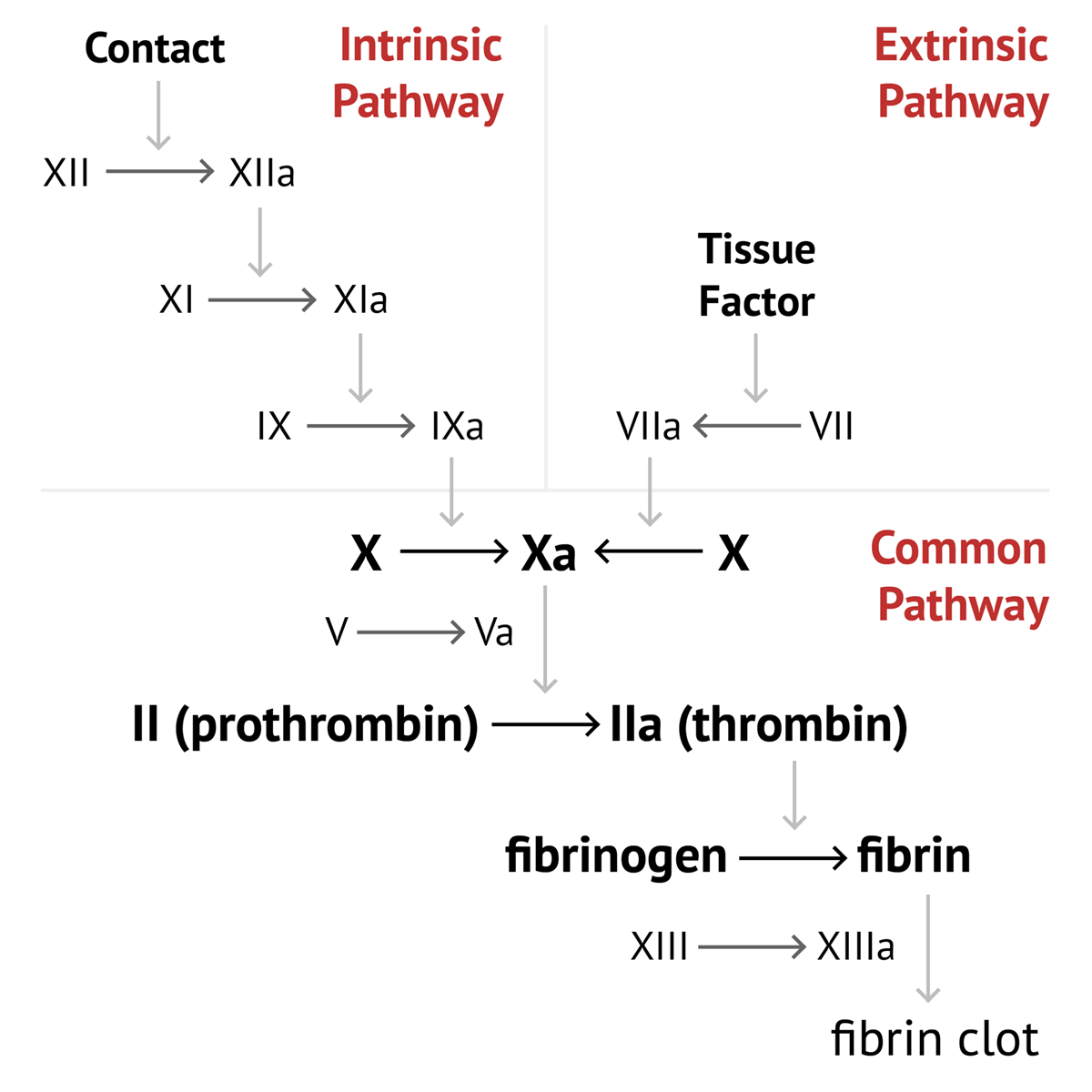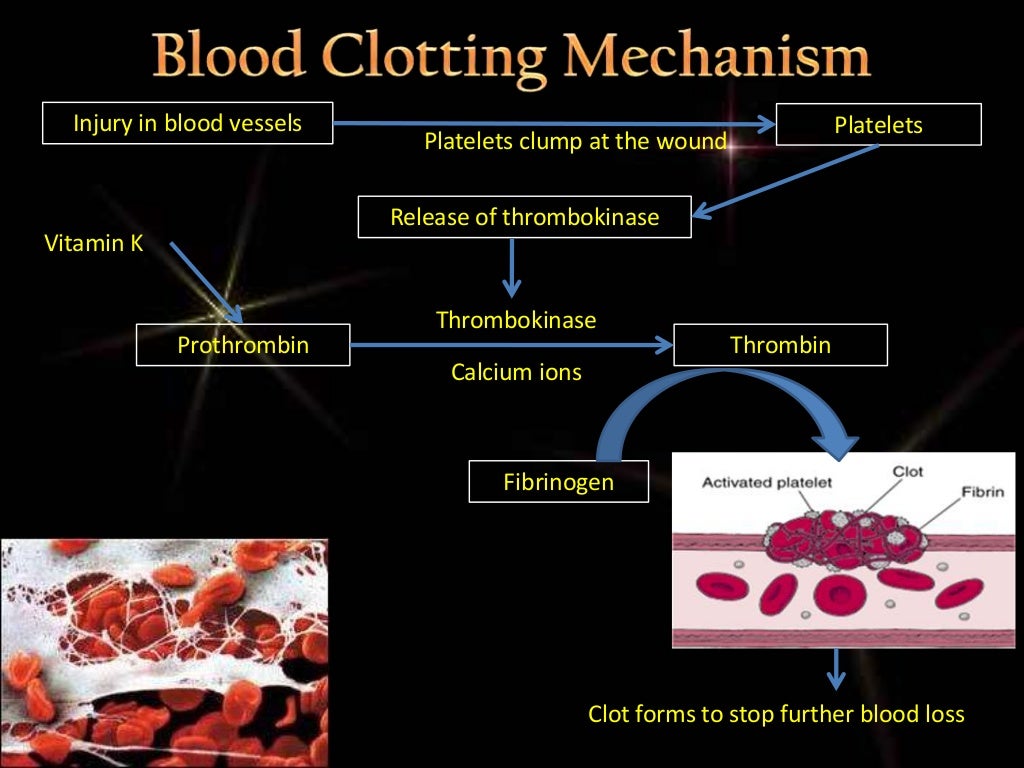Mechanism Of Blood Coagulation Flow Chart Write a flow chart showing major events taking place in the clotting of blood Coagulation or blood clotting is a physiological process in our bodies It prevents excessive bleeding Platelets and clotting factors work together to seal the site of the injury
Pink border represents intrinsic pathway green border represents extrinsic pathway and orange border represents final common pathway of blood coagulation Proteins involved in the main pathway are colored in blue whereas regulatory proteins are colored in brown The coagulation process is characterised by a cascade of events which lead to the formation of a blood clot Proteins called clotting factors initiate reactions which activate more clotting factors This process occurs via two pathways which unite downstream to form the common pathway
Mechanism Of Blood Coagulation Flow Chart

Mechanism Of Blood Coagulation Flow Chart
https://eduinput.com/wp-content/uploads/2022/08/Process-of-Coagulation_11zon.jpg
Coagulation Part 1 Blood Coagulation Process Coagulation Factors And Factors Deficiency
https://www.labpedia.net/wp-content/uploads/-coagulation-part-1-blood-coagulation-process-coagulation-factors-and-factors-deficiency-/coagulation-pathways-27.JPG

Coagulation Part 1 Blood Coagulation Process Coagulation Factors And Factors Deficiency
https://labpedia.net/wp-content/uploads/2020/01/coagulation-pathways-2-952x1024.jpg
COAGULATION OF BLOOD Coagulation or clotting is defined as the process in which blood losses its fluid and becomes a jelly like mass few minutes after it is shed out of collected in a container Mechanism The mechanism by which coagulation allows for hemostasis is an intricate process that is done through a series of clotting factors The intrinsic pathway consists of factors I II IX X XI and XII Respectively each one is named fibrinogen prothrombin Christmas factor Stuart Prower factor plasma thromboplastin and Hageman
The document summarizes the process of blood coagulation It discusses that coagulation occurs through a series of reactions activating clotting factors which convert fibrinogen into fibrin forming a mesh that traps blood cells Hemostasis occurs in three stages vasoconstriction platelet plug formation and blood coagulation Vasoconstriction decreases blood flow from damaged vessels Platelets adhere to collagen at injury sites forming a temporary platelet plug Coagulation involves thrombin converting fibrinogen to fibrin forming fibrin threads that
More picture related to Mechanism Of Blood Coagulation Flow Chart

Coagulation Part 1 Blood Coagulation Process Coagulation Factors And Factors Deficiency
https://labpedia.net/wp-content/uploads/2020/01/Extrinsic-pathway-cycle-1.jpg

Coagulation Part 1 Blood Coagulation Process Coagulation Factors And Factors Deficiency
https://labpedia.net/wp-content/uploads/2020/01/coagulation-pathways-2.jpg

Blood Coagulation Pathway And Resources
https://resources.rndsystems.com/images/blog/blood-coag-blog-header.jpg
Haemostasis means arrest of bleeding During haemostasis several mechanisms interact to slow blood flow block the vessel wall defect with a platelet plug primary haemostasis convert fibrinogen to a jelly like fibrin clot coagulation of blood and later re establish the flow of blood through a mechanism of slow clot lysis fibrinolysis The human body protects against loss of blood through the clotting mechanism Vascular mechanisms platelets coagulation factors prostaglandins enzymes and proteins are the contributors to the clotting mechanism which act together to form clots and stop a loss of blood Through vasoconstriction adhesion activation and aggregation the
Coagulation also known as clotting is the process by which blood changes from a liquid to a gel forming a blood clot It results in hemostasis the cessation of blood loss from a damaged vessel followed by repair Here is a simplified flow chart representing the major events in the clotting of blood 1 Vascular Injury Damage to blood vessel wall due to trauma or injury 2 Vasoconstriction Constriction of blood vessels to reduce blood flow and minimize bleeding 3 Platelet Activation

Blood Coagulation Blood Clotting
http://www.clotbase.bicnirrh.res.in/img/path2.jpg

Blood Clotting Mechanism Flowchart
https://labpedia.net/wp-content/uploads/2020/01/clotting-mechanism-2-1-768x534.jpg

https://byjus.com › question-answer › what-is-meant-by-clotting-of-bloo…
Write a flow chart showing major events taking place in the clotting of blood Coagulation or blood clotting is a physiological process in our bodies It prevents excessive bleeding Platelets and clotting factors work together to seal the site of the injury
http://www.clotbase.bicnirrh.res.in › flowchart.php
Pink border represents intrinsic pathway green border represents extrinsic pathway and orange border represents final common pathway of blood coagulation Proteins involved in the main pathway are colored in blue whereas regulatory proteins are colored in brown

Flow Chart Blood Clotting Process Diagram

Blood Coagulation Blood Clotting

Extrinsic Coagulation Pathway

How Blood Clots Platelets And The Coagulation Cascade Owlcation

How Blood Clots Platelets And The Coagulation Cascade Owlcation

Coagulation Cascade What Is It Steps And More Osmosis

Coagulation Cascade What Is It Steps And More Osmosis

Interpreting Coagulation Studies Coagulation MedSchool

F5 1 3 Mechanism Of Blood Clotting

Coagulation Theory Clotting A Level Biology Revision
Mechanism Of Blood Coagulation Flow Chart - The document summarizes the process of blood coagulation It discusses that coagulation occurs through a series of reactions activating clotting factors which convert fibrinogen into fibrin forming a mesh that traps blood cells